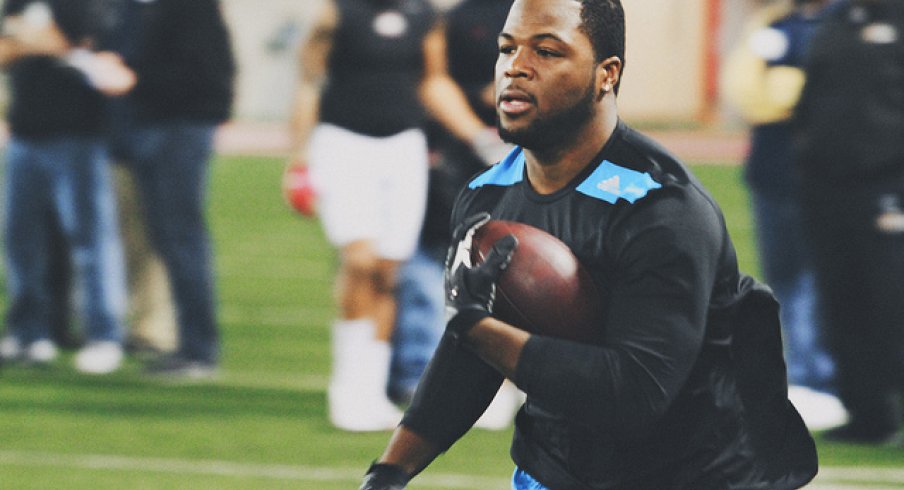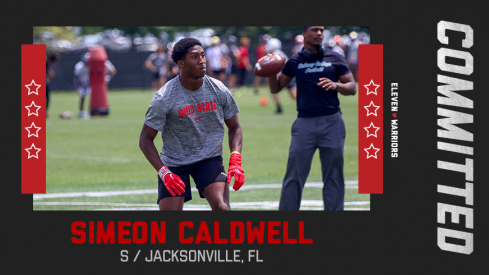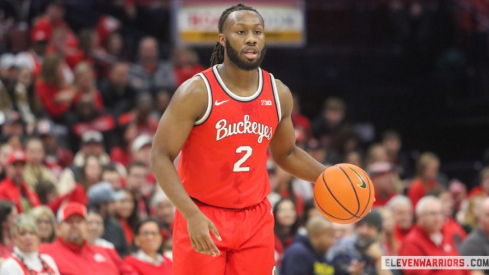Ohio State adds another top-100 safety as Simeon Caldwell commits to the Buckeyes.
Adrian Peterson was the seventh overall pick in the 2007 NFL Draft. Seventeen other running backs were selected after him. Six years later, 23 running backs were taken. But the position’s value was already in steep decline. Unheralded North Carolina tailback Giovanni Bernard was the first running back selected in 2013, 37th overall by the Bengals – the fifth pick of the second round.
It marked the first time since 1963 that a running back wasn’t taken in the first round. Only seven were drafted in the first four rounds. Trent Richardson – third overall in 2012 – is the lone running back to go higher than 27th dating to 2011, and he was traded in the middle of his second season.
“If you look back at the draft 40 years ago, running backs were the most valuable commodity there was,” NFL Network analyst Mike Mayock said. “And today, with all the spread offenses and teams throwing the football 60, 70, 80 percent of the time, there's been a completely different emphasis in how you draft offensively.”
In a quarterback-driven league, running backs have gone the way of the rotary telephone. Not only have pass-happy offenses devalued running backs, the physical and violent nature of the NFL has created a short self life for ball carriers. It’s a trend unlike any other in sports history.
“Growing up watching the NFL and seeing running backs get drafted high, I definitely thought, ‘That’ll be me one day,’” Carlos Hyde said at the combine in February. “It’s still possible. I haven’t given up hope just yet.”
Imagine pitchers or power hitters losing significance in baseball. The NBA isn’t a big man’s game anymore, but there’s still a place for centers. Could the NFL one day be devoid of 1,000-yard rushers? Probably not, but only 13 running backs eclipsed that magical number last season.
Interestingly enough, the Super Bowl-champion Seahawks rode Marshawn Lynch for more than 1,500 yards and 12 touchdowns.
“I think teams have realized you don’t need an elite athlete at the running back position,” Eric Galko, director of scouting at Optimum Scouting, told Eleven Warriors. “If you have creativity as an offensive coordinator, you don’t need one do-it-all guy like Adrian Peterson. You can get by with three or four guys.”
Galko believes years like 2005, which saw three running backs selected in the top five, are a thing of the past. Transcendent players will still appear. Those monster contracts handed out to Peterson and Chris Johnson will continue to decrease, though.
The 2014 NFL free agent season saw Toby Gerhart, he of 276 career carries and five touchdowns, receive a $10.5 million deal from the Jaguars. He’ll make $4.5 million in 2014, $1 million more than Knowshon Moreno, who was a workhorse in the Broncos Super Bowl run last season.
It’s gotten so bad that Browns running back Ben Tate said last week that if given a do-over, he’d be a safety instead of a running back. Supply and demand is at the root of running backs’ slippage. The depth of this season’s draft class mimics Lake Superior. More than 21 underclassmen declared and there are a handful of seniors, including Hyde.
The need just isn’t there to reach early in the draft. It’s a nearly unanimous projection among draft experts that no running back will go in the first round for the second consecutive year. Hyde is slated by many to be the first taken and some believe that could happen as late as the third round. The later rounds rarely offer excitement, but a new trend could develop with impact running backs being selected in the fourth round and beyond.
It happened with Alfred Morris in 2012, when the Redskins picked him in the sixth round. He was an All-Pro in Year 1 and a Pro Bowler in Year 2. Morris’s immediate success further strengthened the thinking of front offices in not taking running backs with valuable first- and even second-round draft picks.
“Obviously last year with there being no running back going in the first round, I think there has just been a bigger emphasis on the pass in the NFL, and maybe I’m biased, but I feel like running back are just as valuable as anybody else on the field especially on the offense,” former Washington running back Bishop Sankey told Pro Football Talk. “We not only contribute on the ground but we also pass protect, protect the quarterback and we can also be used as an asset out of the backfield catching the ball.”
Hyde is the marquee feature back available. He’s equal parts size, power and speed. His frame and running style are similar to reigning offensive rookie of the year, Eddie Lacy. Like Hyde, Lacy enjoyed a standout college career, but plummeted in the draft – pick 61 – due to little demand.
“Carlos Hyde is built to take hits for a long time,” Galko said. “He kind of looks like Adrian Peterson at times in terms of fighting off tacklers and getting extra yards. He doesn’t wear down as the game goes on.”
During a sometimes unstable four-year career at Ohio State, Hyde amassed more than 3,000 yards, including a 1,500-yard senior season. He scored 37 career touchdowns and gained 6.1 yards per carry, establishing a new school record.
“I definitely feel like I should be regarded as the best running back in this draft,” Hyde said. “I feel like my game does the talking, and if you watch the film you can see that for yourself.”
“You can’t just pass the whole game.”– Carlos Hyde
Versatility is what makes Hyde such a favorite among draft experts. There aren’t many 235-pound backs that can make guys miss, run over defenders and outrun those in pursuit. Hyde’s also shown he’s adept at pass blocking.
He’s overcome every roadblock put in his way. First came Fork Union Military Academy. When Hyde arrived at Ohio State, he played sparingly as a freshman. His sophomore season of 2011 was a mixed bag. The team struggled, but Hyde showed glimpses of the star he would become. There were also clashes with interim head coach Luke Fickell. Under Meyer, however, Hyde thrived for two seasons, save for an off-field incident last summer.
A decreasing need for running backs is just the latest setback for Hyde. His childhood vision of being a first-round draft pick might not be realized. Hyde isn’t going to sign a record rookie contract or become the face of his franchise. But he will enter his first NFL season determined to once again prove throngs of naysayers wrong.
“Teams are doubting us. They don’t think we’re capable of doing what we know we can do,” he said. “They’re just downplaying us, thinking we can just wait to get y’all. There are guys that have been drafted late that are having a lot of success in the league right now, so that’s kind of changing the GMs’ minds right now.
“You can’t just pass the whole game.”


